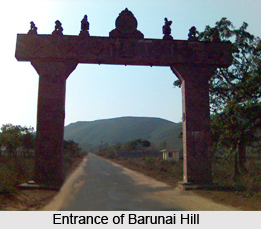 History of Khordha dates back to 1568 AD when it served as the capital of the region of Odisha. Khordha was once densely populated by Savaras tribal group who can still be spotted in some regions. Khordha gained prominence at the time when the first King of Khordha dynasty known as Ramachandra Deva made the place the capital of his kingdom. The selection of this place was owing to its strategic location as Khordha was guarded by Barunai Hill on one side and dense forest on the other. The event took place in the later part of 16th century. Although the place encountered repeated onslaughts from Maratha and Muslim cavalry, it managed to maintain the independence of its royal fort till 1804. This royal fort known as Khurdagada is often called as the "last independent fort" which was kept free from the capture of British East India Company for a long period owing to the strong opposition offered by the commander of the fort, Bakshi Jagabandhu. He was popularly known as Paika Bakshi. This was also supported by the then king Mukunda Deva, under the guidance of Jayakrushna Raiguru, who opposed the British dominations but was, later, disposed off his territory. After this, following the Second Anglo-Maratha War, the British East India Company captured Khordha.
History of Khordha dates back to 1568 AD when it served as the capital of the region of Odisha. Khordha was once densely populated by Savaras tribal group who can still be spotted in some regions. Khordha gained prominence at the time when the first King of Khordha dynasty known as Ramachandra Deva made the place the capital of his kingdom. The selection of this place was owing to its strategic location as Khordha was guarded by Barunai Hill on one side and dense forest on the other. The event took place in the later part of 16th century. Although the place encountered repeated onslaughts from Maratha and Muslim cavalry, it managed to maintain the independence of its royal fort till 1804. This royal fort known as Khurdagada is often called as the "last independent fort" which was kept free from the capture of British East India Company for a long period owing to the strong opposition offered by the commander of the fort, Bakshi Jagabandhu. He was popularly known as Paika Bakshi. This was also supported by the then king Mukunda Deva, under the guidance of Jayakrushna Raiguru, who opposed the British dominations but was, later, disposed off his territory. After this, following the Second Anglo-Maratha War, the British East India Company captured Khordha.
Although the British attained possession of Khordha by 1803, it was included in the British territory in 1827. This was a consequence of the strong revolts of the Paikas of Khurda which greatly affected the British administration in this region. During this period, a strong rebellion took place which was termed as Paika Rebellion of 1817-18 under the commandership of Bakshi Jagabandhu. Khordha was probably known as Kurada previously as engraved on the milestones of the region. The fort of Khordha, Khurdagada, is presently completely in ruins which reminds its erstwhile glory.
This article is a stub. You can enrich by adding more information to it. Send your Write Up to content@indianetzone.com






